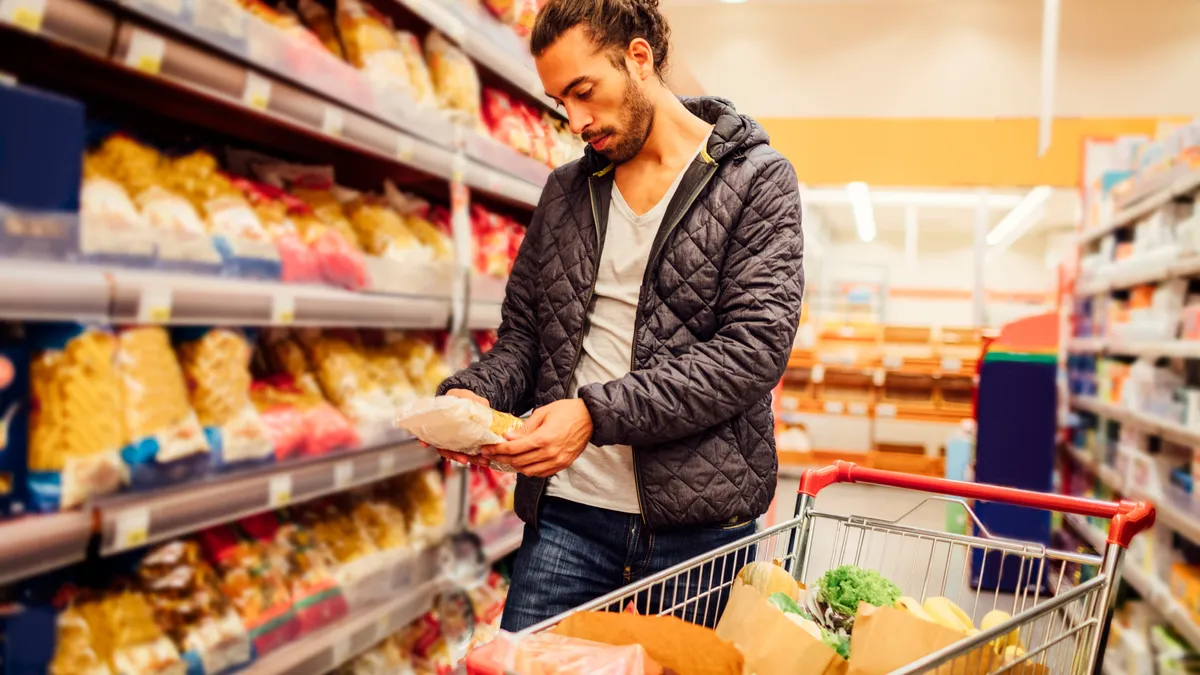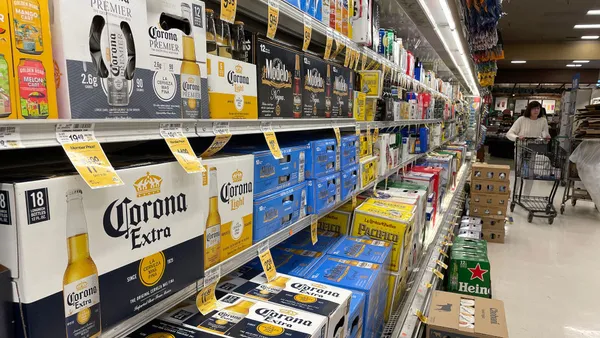Dive Brief:
- Food-at-home prices increased at a 13% year-over-year clip in September, while the overall inflation rate was down compared with the same point in 2021, to 8.2%, according to Consumer Price Index data released Tuesday by the U.S. Bureau of Labor Statistics (BLS).
- The food-at-home index moved up by 0.7% last month compared with its level last month, extending a string of monthly increases that began early last year.
- Grocery inflation rose in September at a lower annual rate for the first time since May 2021 but remains within close range of the 43-year high it set in August.
Dive Insight:
While grocery prices may not have set another record last month, their continued fast rise remains a central challenge for food retailers navigating a highly uncertain economic landscape.
The food-at-home index last month was down on an annual basis last month from 13.5% in August, but nevertheless was a key reason why the cost of living in the U.S. continues to march ahead at such a brisk pace. Core inflation — which excludes food and energy prices because of their often-volatile swings — came in at 6.6% in September, up from the 6.3% level recorded in August, underscoring the broad-based nature of the price increases shaking the economy.
Food-at-home inflation stabilizes
Adding to the pressure on grocers is the fact that many people believe that the inflation they see when buying food at the supermarket is even higher than government statistics indicate. In July, for instance, consumers polled by Dunnhumby said they thought food-at-home prices were rising at an annual rate of almost 23%, about 10 percentage points higher than the actual figure.
The continuing rise in grocery prices, combined with the sense among shoppers that inflation is worse than it actually is, highlights the need for supermarket operators to take steps to help consumers handle the shocks they are seeing.
“Retailers will absolutely need to focus on their price perception and provide consumers with great value and offers on the items that they care most about across all channels headed into the winter,” Matt Pavich, senior director of retail innovation at Revionics, which provides price-optimization tools to retailers, said in comments provided by email. “As the holidays approach, this remains as important as ever, but also means that promotions and markdowns will become more critical.”
Gasoline prices, which like food costs are a highly visible sign for consumers about where inflation is headed, were up 18.2% in September compared to where they were a year ago, but fell month-to-month for the third month in a row, the BLS said.
The average price of a gallon of gas moved down steadily for most of September before turning the other way as the month drew to a close, according to the U.S. U.S. Energy Information Administration, as the Organization of the Petroleum Exporting Countries took steps to push up the price of oil.













